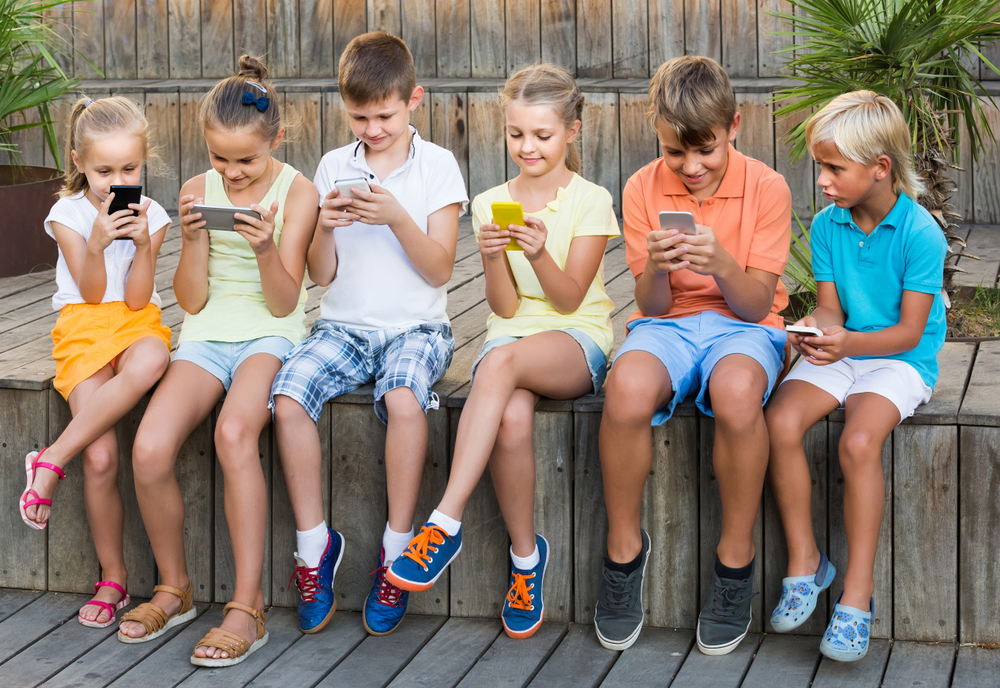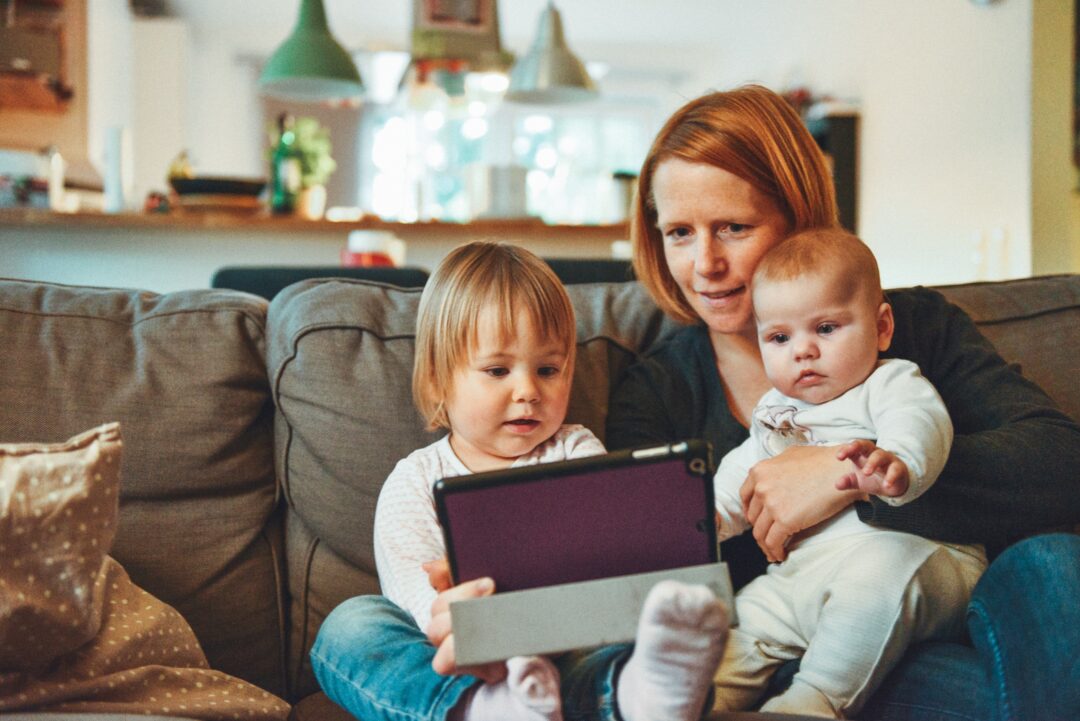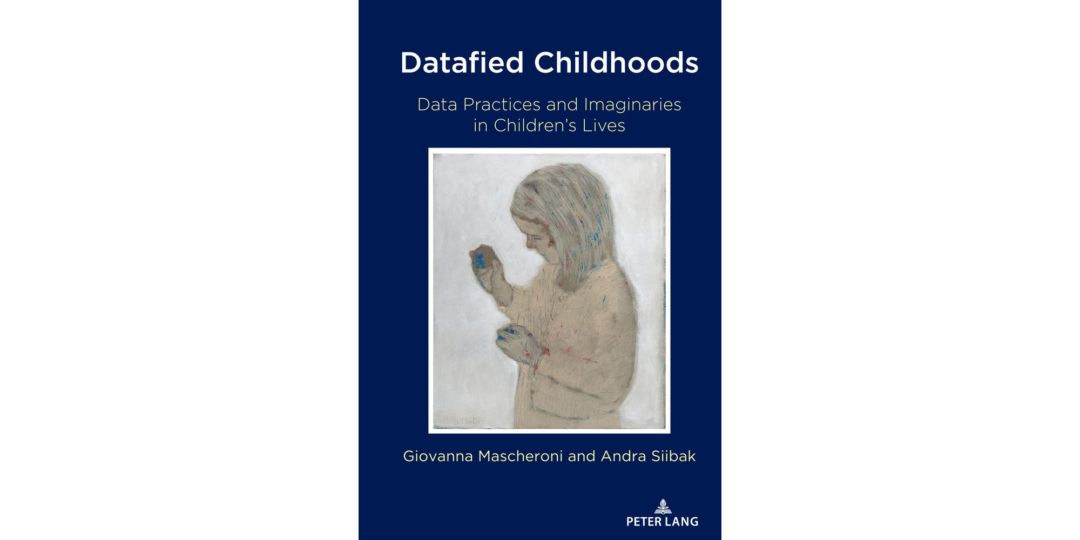Upon mentioning children and artificial intelligence (AI), we are immediately brought to think of child-robot interaction. However, children’s encounters with AI in everyday life are manifold, and not always involving interaction with embodied intelligent agents – that is, social robots embodied in a material artefact. Instead, robots intended for interaction with young children are often (partly) automated material artefacts that simulate human interaction – hence they are, to all intents and purposes, social robots – without necessarily incorporating an artificial intelligence.
Moreover, to this day, children mostly meet artificial intelligence in its disembodied and therefore immaterial form, in spite of its digital materiality (Pink, Ardevol & Lanzeni, 2016): from the ever more present smart speakers in our homes, to the algorithms of YouTube and SVOD platforms (Netflix, Disney +, Prime Video) that transform watching TV through playlists and viewing suggestions; from customised learning platforms that apply AI and gamification to schooling (ClassDojo), to facial recognition software which automatically identify children in their parents’ social media photos even years after their publication.
Human-machine communication
We must therefore refrain from equating artificial intelligence = robots embedded in a material humanoid technological artefact. One feature, however, binds artificial intelligence in both its embodied and disembodied forms: the redistribution of agency. Whether embodied social robots, conversational agents, or algorithms that self-learn from our practices and data (plus those of other users), artificial intelligence stands out for its capacity for agency: it communicates and does things (almost) autonomously.
Such is the distinctive contribution of media studies (Guzman, 2018; Hepp, 2020) and of Science and Technology studies with a sociological approach (Suchman, 1987), which do not focus primarily on the perceptual and psychological dimension, but on human-machine interaction as a form of communication. In this perspective, therefore, artificial intelligence enters into a communicative relationship with human subjects not simply as a communication channel or medium but as a communic-actor in its own right.
Considering embodied or disembodied AI as media poses a threefold challenge to established assumptions in the sociology of communication and media (Peter & Kühne, 2018): first, to the very idea of media as channels or tools; second, to the assumption that, even in mediated interactions, the communicative partner is a human actor; and finally, to the very boundaries of communicative interactions and what is communicable. These challenges extend beyond disciplinary boundaries and also affect the everyday relationships with these subjects.
We illustrate this approach with evidence from two recent research studies on children, IoTs and datafication that we conducted in Italy, and that situate child-artificial intelligence interaction within the home and family relationships. The data show that interaction with disembodied AI is perceived as more natural and less disorienting, while AI embedded in material artefacts provides a situated instance of the theoretical challenges we have just outlined.
Children’s interaction with disembodied AI
Data from DataChildFutures – a project funded by Fondazione Cariplo as part of the 2019 Ricerca Sociale grant, and which will study the datafication of Italian families’ daily lives for the next three years – show the complex network of interactions with connected devices in the domestic context, through which children and their parents generate data.
First, the research shows the pervasive presence of smartphones, tablets and SVOD platforms. All interviewed households own a smartphone and 84% own at least one tablet. Subscriptions to on-demand platforms are equally popular (74%). The data also reveal the rapid spread of smart speakers, wearable devices (such as smartwatches and fitness bands) and internet-connected toys in Italian households with children under 8 years old (Figure 1). The increasing diffusion of smart speakers, which are accessed by children and parents through voice commands, is particularly important: 46% of participating households have virtual assistants connected to the Internet. Finally, internet-connected toys and wearable devices are found in 40% and 57% of participating households respectively.

Children’s autonomy in using the devices varies (Figure 2) depending on the kind of media available at home and parents’ technological orientation. Almost two-thirds of Italian children under the age of eight use connected toys independently. Compared to other devices, tablets stand out as the same percentage of children use them independently (43%) or through parental supervision (42%). In contrast, on-demand platform use is rarely autonomous (26%) and mostly done in presence of parents and other adults (68%).

As household devices become increasingly sensor-equipped and connected to networks, they become media (Bunz & Meikle, 2017) and, as such, they are used by households’ members to mediate the most mundane and intimate aspects of family life. As a result, digital devices creep into the routine and caring practices of the domestic context: play practices, interactions, and everyday-life meanings are shaped by the the progressive integration of digital media into the home.
Referring to the emblematic case of smart speakers, our data show that households’ members use them several times a day to perform different activities, such as listening to music, retrieving information, reminders and news, communicating with others and controlling other devices. In particular, our data provide insights into how disembodied artificial intelligence is being integrated into children’s daily lives, facilitated by parental practices: 43% of smart speaker owners use them to tell bedtime stories to their children every day. Through intimate and everyday use practices, smart speakers (as well as other objects) are incorporated into household routines and the fabric of family relationships to the point of becoming invisible and taken for granted.
This result illustrates the process of ‘domestication’ (Silverstone and Hirsh, 1992; Haddon, 2004) of internet-connected devices and toys in Italian households. The term conveys the process by which families welcome artefacts into the private sphere, and interpret them in relation to the domestic context and its uses. Simultaneously, the concept indicates how the family adapts to the new medium in a complementary way. Domestication, however, may not be a linear or “natural” phenomenon: families react differently to new artefacts, which may be partially domesticated or even rejected, along a path of continuous negotiation (Berker et al., 2005). The next example, based on another research study, illustrates such an instance of unsuccessful domestication.
Children’s interaction with embodied AI
The study on the domestication of smart toys – funded by the Australian government as part of the Australian Research Council’s Discovery Projects – focuses on Cozmo, a network-connected smart robot-toy. The study investigates child-robot interaction as a practice situated within the domestic space and embodied in family dynamics and relationship between children, parents, and siblings. Thereby, we interpret children’s play practices with Cozmo in light of how they relate to other activities, such as media consumption, other play practices, and parental mediation.
In respect to the challenges of the sociology of communication and media outlined above, the study’s theoretical framework offers new sociological coordinates to study human-robot interaction, complementing the analysis of cognitive, perceptual and emotional processes that psychology prioritises in studies of human-robot relationships. In particular, our theoretical framework emphasises the meanings, imaginaries and practices that emerge (and are co-constructed) out of the mutual interaction between humans and machines.
Our findings show that domestication and its main stages – appropriation, objectification, incorporation and conversion (Silverstone & Hirsch, 2002) – are affected by, and in turn condition the variety of interactions in the domestic context. In particular, the embodied nature of the artefact, and its physical yet digital materiality (Cozmo requires the installation of an app on smartphones and tablets) conditions its objectification – which, as originally formulated in the domestication of technology approach, denotes the spatial arrangement of a medium in the domestic context for functional-aesthetic reasons (Haddon & Silverstone, 2002). Cozmo’s arrangement in the domestic space is limited by its technological features: to function, Cozmo’s base must be plugged into a power outlet. Concerning the objectification of Cozmo’s immaterial dimension, choosing the device on which to install the Cozmo application shapes the children’s play experience. If the application is on the parents’ smartphone or tablet, the experience of playing with Cozmo, as well as the habitual routines over time, will often be mediated by the presence of the parents. Conversely, children who have installed the application on a smartphone or tablet for personal use demonstrate greater autonomy and agency with respect to the spatial and temporal dimensions of play.
Incorporation involves managing the temporal routines of play activities, and modifying them to accommodate Cozmo as ‘part of the family’ and its rhythms. Children discovered the first functionalities in the initial moments of play, such as guiding the robot via the smartphone-remote control, which took on a routine character, to the detriment of more complex functionalities. However, during the conversion phase – when children co-construct, test and negotiate Cozmo’s meanings – the features that differentiate embodied robots from other intelligent artefacts emerged more sharply.
In particular, the affordance of liveliness – i.e. the presentation of Cozmo as an animated object and a ‘social’ robot that simulates the emotions and reactions typical of human behaviour – contrasts with some ‘unusual’ robot behaviours emerging from playing, such as technical problems and glitches. These technical problems within the child-robot interaction compromise the liveliness of the artefact as children do not interpret them as mistakes related to Cozmo’s technological ‘nature’; instead, children (like parents) consider these episodes as real communication problems, which they project onto themselves and interpret in the light of their own biographical attachment to Cozmo. For example, when the facial recognition software does not work correctly, a change of hairstyle or glasses is identified as the main cause. Consequently, glitches represent moments when the communicative relationship with the robot is jammed, preventing a full domestication of Cozmo, and especially the identification of the child with Cozmo (conversion) (Mascheroni, Zaffaroni, Seresini, 2020).
Conclusions
The increasingly frequent interaction of children with AI systems raises many critical issues, both in terms of the social and political consequences of datafication and algorithmic governance, as well as psychological and cognitive consequences (Kahn, Gary, & Shen, 2013). Critical contributions have stressed the need for child-friendly measures to protect privacy and human rights (Barassi, 2020; Bietti, 2020) in response to the White Paper on Artificial Intelligence published by the European Commission in February 2020.
We believe that protecting children from systematic and large-scale discrimination produced by algorithmic bias is a moral responsibility of us adults. In this contribution, however, we sought to propose a communicative and sociological approach to the interaction between children and AI, to highlight not only the fundamental right to be protected (protection), and the right to access content, media and resources tailored to children (provision), but also the right to exploit new technologies for learning, play, relationships, self-expression and creativity (participation). The challenge is to balance the rights to protection, participation and provision both in the design of embodied and disembodied artificial intelligence systems and in their regulation, as well as, ultimately, in social imaginaries.
Bibliography
Aarsand, P. (2016). Children’s media practices: challenges and dilemmas for the qualitative researcher. Journal of Children and Media, 10(1), pp. 90-97, https://doi.org/10.1080/17482798.2015.1121894.
Barassi, V. (2020). The Human Error in AI and question about Children’s Rights. Retrieved from: http://childdatacitizen.com/cdc/wp-content/uploads/2020/06/The-Human-Error-in-AI-and-Children-Rights_Prof.-Barassi_Response-to-AI-White-Paper-.pdf
Berker, T., Hartmann, M., Punie, Y., Ward, K. (a cura di) (2005). Domestication of Media and Technology. Maidenhead: Open University Press.
Bietti, E. (2020). Response to the European Commission’s White Paper on Artificial Intelligence. Medium. Retrieved from: https://medium.com/berkman-klein-center/response-to-the-european-commissions-white-paper-on-artificial-intelligence-a525432b6dec
Bunz, M., & Meikle, G. (2017). The Internet of Things. Cambridge: John Wiley & Sons.
Guzman, A. L. (2018). What is Human-Machine Communication, Anyway? In Guzman, L. (Ed.), Human-Machine Communication: Rethinking Communication, Technology, and Ourselves. New York: Peter Lang, pp. 1-28. https://doi.org/10.3726/b14399
Haddon, L. (2004). Information and communication technologies in everyday life: A concise introduction and research guide. Oxford: Berg.
Hepp, A. (2020). Deep Mediatization. London: Routledge
Kahn, P. H., Gary, H. E., & Shen, S. (2013). Children’s social relationships with current and near-future robots. Child Development Perspectives, 7(1), 32-37. https://doi.org/10.1111/cdep.12011
Mascheroni, G., Zaffaroni, L. G., & Seresini, M. F. (2020). I processi di appropriazione dei robot internet-connected nel contesto domestico. Sistemi intelligenti, 32(1), 57-69.
Peter, J., & Kühne, R. (2018). The new frontier in communication research: Why we should study social robots. Media and Communication, 6(3), 73-76. doi:10.17645/mac.v6i3.1596
Pink, S., Ardèvol, E., & Lanzeni, D. (Eds.). (2016). Digital materialities: Design and anthropology. London: Bloomsbury.
Silverstone, R., Hirsch, E. (Eds.) (1992). Consuming Technologies: Media and Information in Domestic Space. London: Routledge.
Suchman, L. (1987). Plans and situated actions: The Problem of Human-Machine Communication. Cambridge: Cambridge University Press.
Suchman, L. (2011). Subject objects. Feminist Theory, 12(2), pp. 119-145. https://doi.org/10.1177/1464700111404205
Turkle, S. (2006). Tamagotchi diary. London Review of Books, 28(8), pp. 36-37.
@ ALL RIGHTS RESERVED
This article was originally published by Agenda Digitale and has been republished here with permission.


